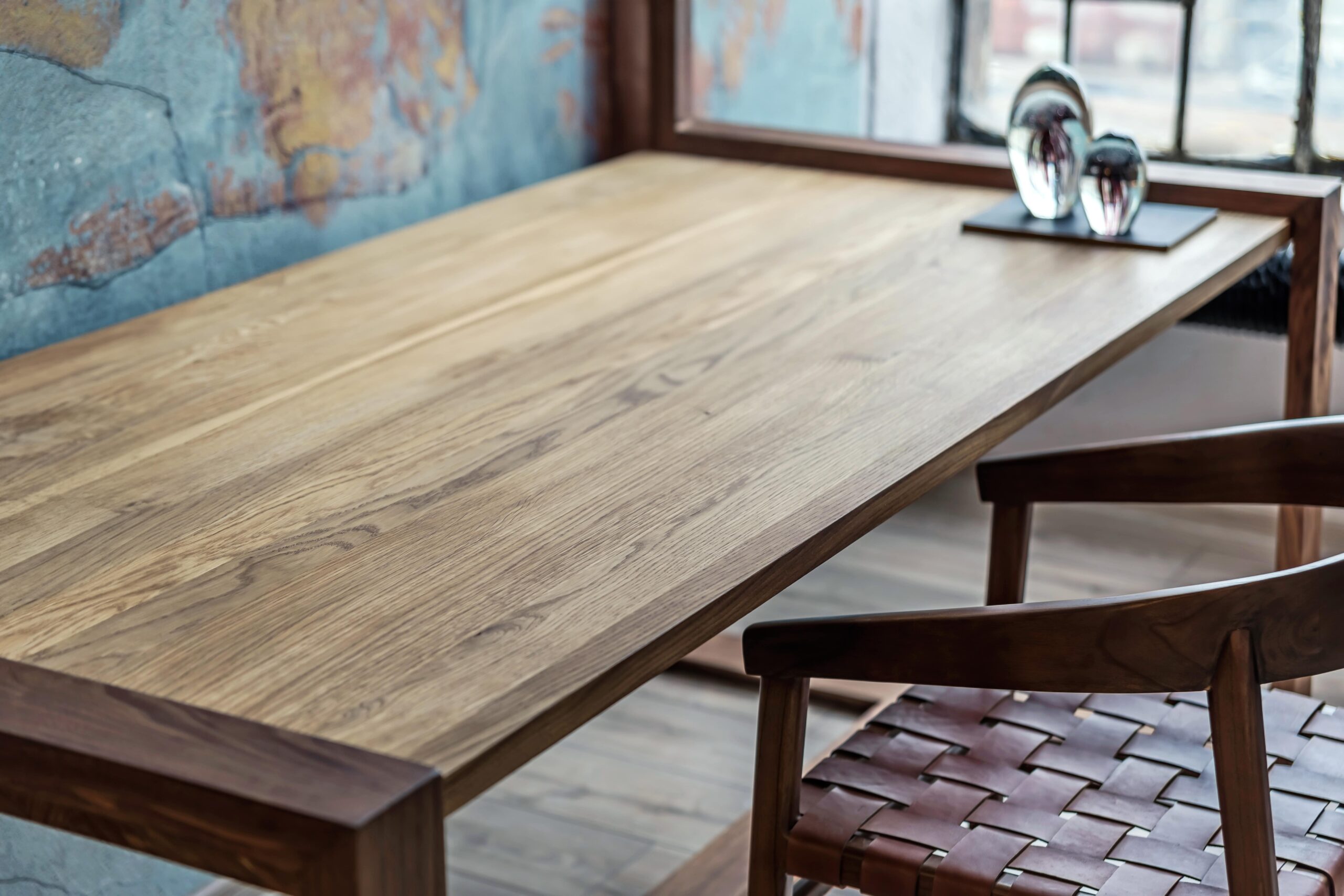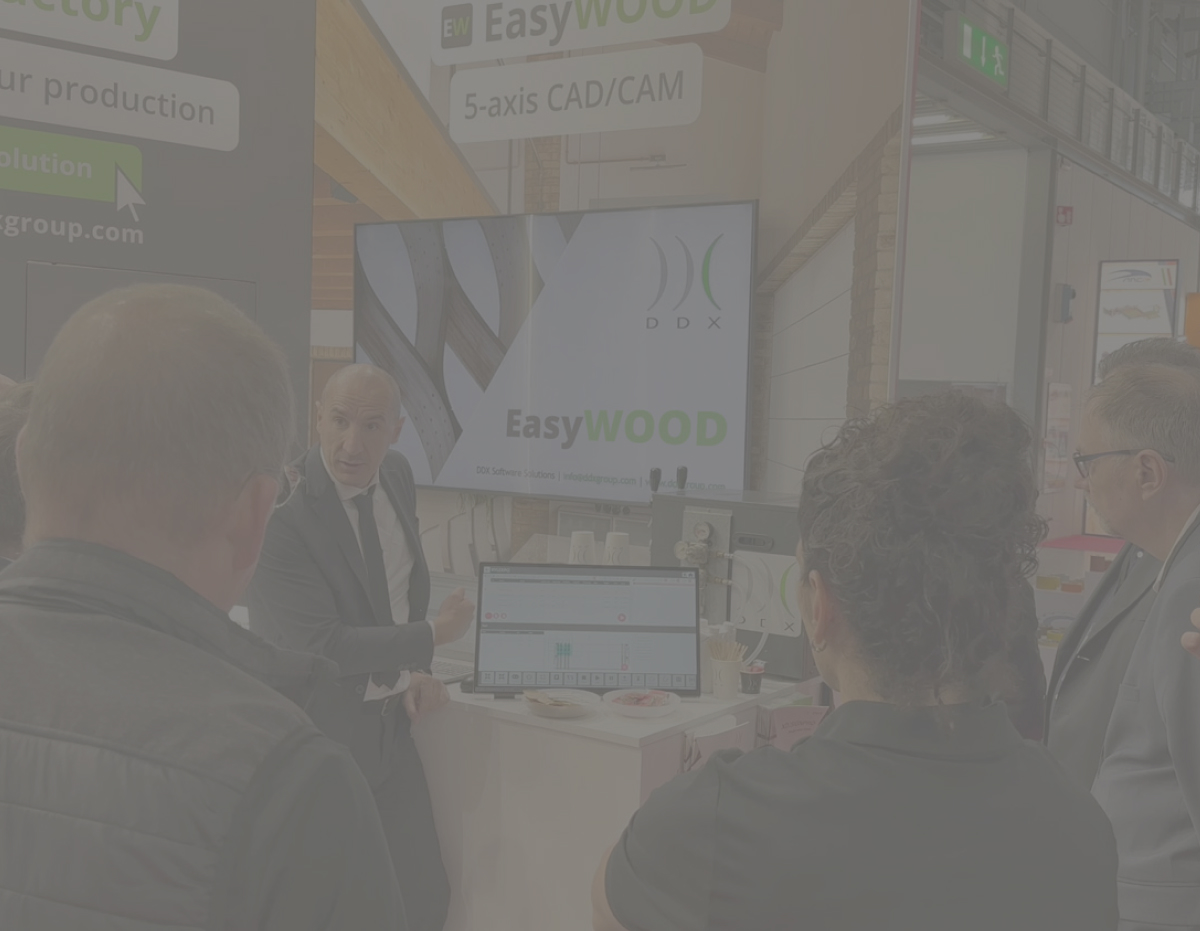
Vein-matching isn’t limited to stone projects. Every material reveals its own story through its surface: the cool elegance of marble, the enduring strength of granite, and the warmth of wood.
Even in design projects that highlight the natural features of wood, the attention to the continuity of the grain between panels plays a central role. Depending on the orientation, the identity of the space — and therefore its aesthetic — can change completely.
We’ve also written an article about vein-matching for kitchen and bathroom stone countertops.
What is vein-matching in woodworking?
Vein-matching can also be applied to woodworking projects. This technique aligns the wood grain across panels to create a natural, continuous aesthetic—especially at the joints.
It’s not just about placing pieces of wood next to each other; the goal is to make the panels appear as if they come from a single, large block of wood, ensuring a cohesive and harmonious final result.
To understand the art of vein-matching in woodworking, it’s important to know how wood grain is handled.
At the core of the process is veneering, a technique that covers panels with thin layers of premium wood.
How to apply vein-matching to wood panels
To achieve vein-matching in woodworking, various techniques are used to align the wood grain. These methods depend on how the veneer sheets are arranged on a given panel.
The most common alignment techniques
Here are some of the most popular vein-matching techniques:
- Bookmatch: each veneer sheet comes from the same cutting sequence. The pattern is symmetrical, like the pages of an open book.
- Slip-match: adjacent sheets are laid side by side in sequence, creating a continuous flow of the wood grain.
- Reverse-fleur: a less common variation, where flame-like wood grains are oriented in opposite directions (one upward, the next downward), creating a dynamic, rhythmic effect across the surface.
The most original wood grain alignment techniques
Some vein-matching methods break the rules and don’t necessarily aim for continuous wood grain. Let’s explore them.
- Mismatch: veneer pieces don’t follow a defined pattern. The result is a surface with bold color contrasts and a deliberately irregular, dynamic look.
- Plank effect: panels differ noticeably in color, grain, and width, since they don’t come from the same piece of wood. The final look closely resembles that of a parquet floor.
Curious to see how we can make your everyday work easier?
Other techniques to ensure wood grain continuity
In some types of woodworking, the wood grain is used not only to maintain continuity, but also to create striking geometric compositions. These solutions, while inspired by the principle of vein-matching, sometimes overlap with marquetry, where the placement of veneer sheets serves a more decorative than technical purpose.
- Diamond pattern: four straight-grain wood panels are aligned to form a diamond shape that extends across the entire surface.
- A raggio: il vein-matching per la falegnameria incontra l’arte. In questo caso, i pannelli di legno creano un pattern radiale, per una resa estetica particolarmente suggestiva.
- Herringbone pattern: veneer sheets are cut and laid out to form a repeating herringbone design, creating a refined, rhythmic look through their perpendicular layout.
Interested in seeing how EasyWOOD can elevate your woodworking projects?









